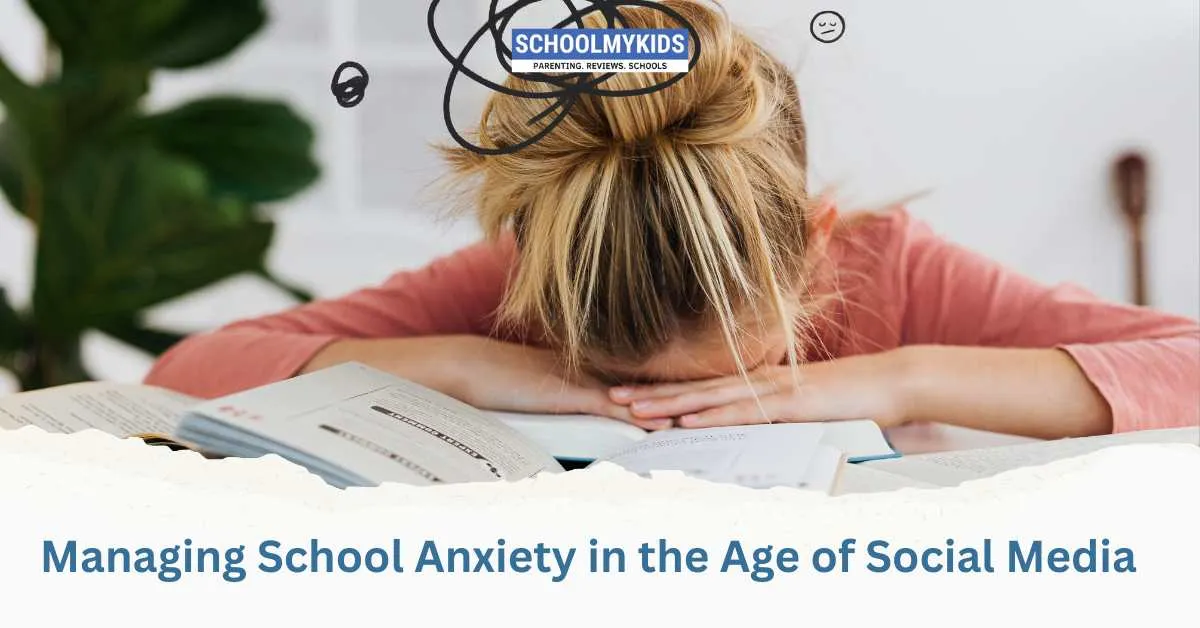Anxiety has always been part of the student experience, with exams, peer relationships, and future uncertainties weighing heavily on young minds. However, the rise of social media has amplified these pressures. Platforms like Instagram, Snapchat, TikTok, and Twitter can be a source of both connection and stress, exposing students to unrealistic standards, cyberbullying, and round-the-clock comparisons.
For parents, helping children navigate these digital challenges is no small task. It involves striking a delicate balance between empowering them to explore social media’s positive aspects and protecting them from potential harms. This article delves into the causes of school anxiety in the social media era, offering practical strategies for students, parents, and educators alike.
How Social Media Impacts Student Anxiety
- Constant Comparison: From lifestyle vlogs to glamorous selfies, social media often presents curated highlights. Students may feel inadequate when they compare their own lives to these seemingly perfect snapshots.
- Fear of Missing Out (FOMO): Witnessing friends attending events, parties, or study sessions without them can trigger anxiety, making students feel excluded or less popular.
- Cyberbullying: Bullying no longer ends when the school bell rings. Negative comments, rumors, or targeted harassment can continue online, severely impacting a student’s sense of safety and well-being.
Recognizing Symptoms of Anxiety
- Changes in Mood and Behavior: Irritability, frequent mood swings, or withdrawal from usual activities can be signs of heightened stress.
- Physical Manifestations: Headaches, stomachaches, or sleep disturbances may occur when anxiety goes unmanaged.
- Academic Decline: A drop in grades or loss of interest in school projects can indicate that a student’s mental health is at risk.
Strategies for Students
- Digital Boundaries: Setting screen time limits, especially during late evenings, can alleviate the pressure of being constantly “available” online. Turning off push notifications also helps maintain focus during homework sessions.
- Mindful Social Media Use: Following accounts that inspire positivity—such as educational channels, mental health advocates, or wholesome meme pages—can create a more uplifting feed.
- Seek Peer Support: Talking to friends who share similar concerns can normalize feelings of anxiety. Forming a study group or support circle can lessen the isolation that social media sometimes fosters.
Practical Tips for Parents
- Open Communication: Encourage honest discussions about social media. Ask questions like, “What do you think about this trend?” or “How does it make you feel when you see posts like that?”
- Monitor Without Overstepping: Younger teens might need a degree of supervision online. Strive for transparency—explain why you want to periodically check their online activity, emphasizing safety rather than control.
- Encourage Offline Activities: Extracurricular engagements, family outings, and in-person hobbies can shift attention away from digital pressures. Having a well-rounded set of interests can reduce the emotional weight of online life.
The Role of Schools
- Mental Health Education: Incorporate lessons on stress management, resilience, and social media awareness into the curriculum. When students understand how the brain responds to stress, they’re better equipped to handle it.
- Access to Counselors: School counselors trained in digital-era challenges can provide immediate support. Ensuring students know how to reach these professionals is paramount.
- Bullying Policies: Strong anti-bullying policies should explicitly include cyberbullying. Clear consequences and support for victims can deter would-be bullies and reassure anxious students.
Technology as Part of the Solution
- Mindfulness and Mental Health Apps: Several apps offer guided meditations, breathing exercises, and journaling prompts tailored for students. Encouraging mindful tech use can transform smartphones from stressors into stress-busters.
- Digital Literacy Programs: Teaching students how to critically evaluate social media content can reduce the impact of online comparisons. Understanding that many images are filtered or edited can lessen feelings of inadequacy.
- Safe Online Spaces: Some online platforms or forums focus on peer support, homework help, or shared interests like art and music. When curated carefully, these communities can foster constructive interaction.
Overcoming Barriers to Support
- Stigma Around Mental Health: Despite growing awareness, some students fear judgment if they admit to anxiety. Fostering a supportive environment—both at home and at school—encourages early intervention.
- Lack of Resources: Not all communities have ample counseling services. In such cases, online therapy or telehealth sessions can offer alternatives.
- Cultural and Generational Gaps: In families where parents didn’t grow up with social media, misunderstandings can arise. Bridging this gap through open dialogue helps create empathy and more effective guidance.
Long-Term Resilience
- Building Self-Esteem: Encouraging students to focus on personal growth—like developing a skill or nurturing a talent—can provide a sturdy foundation for self-esteem that doesn’t rely on “likes” or “follows.”
- Goal Setting and Time Management: Structured routines that include study schedules, extracurriculars, and relaxation time give students a sense of control. This structured approach can reduce anxiety triggered by chaos or procrastination.
- Healthy Coping Mechanisms:Teaching students exercises in mindfulness, journaling, and physical activity prepares them to handle stress throughout life, not just during their school years.
Conclusion
Navigating school anxiety in the age of social media demands a collaborative effort among students, parents, and educators. By understanding the unique pressures of digital life—constant comparison, FOMO, and cyberbullying—and implementing both preventative and responsive strategies, it’s possible to mitigate the negative impacts. The goal isn’t to vilify social media but to equip young people with the emotional tools and digital literacy skills they need to thrive. Open communication, proactive mental health support, and thoughtful boundary-setting can pave the way for a healthier relationship with technology—one where social media serves as a catalyst for learning, community-building, and self-expression, rather than a source of unrelenting stress.








Be the first one to comment on this story.